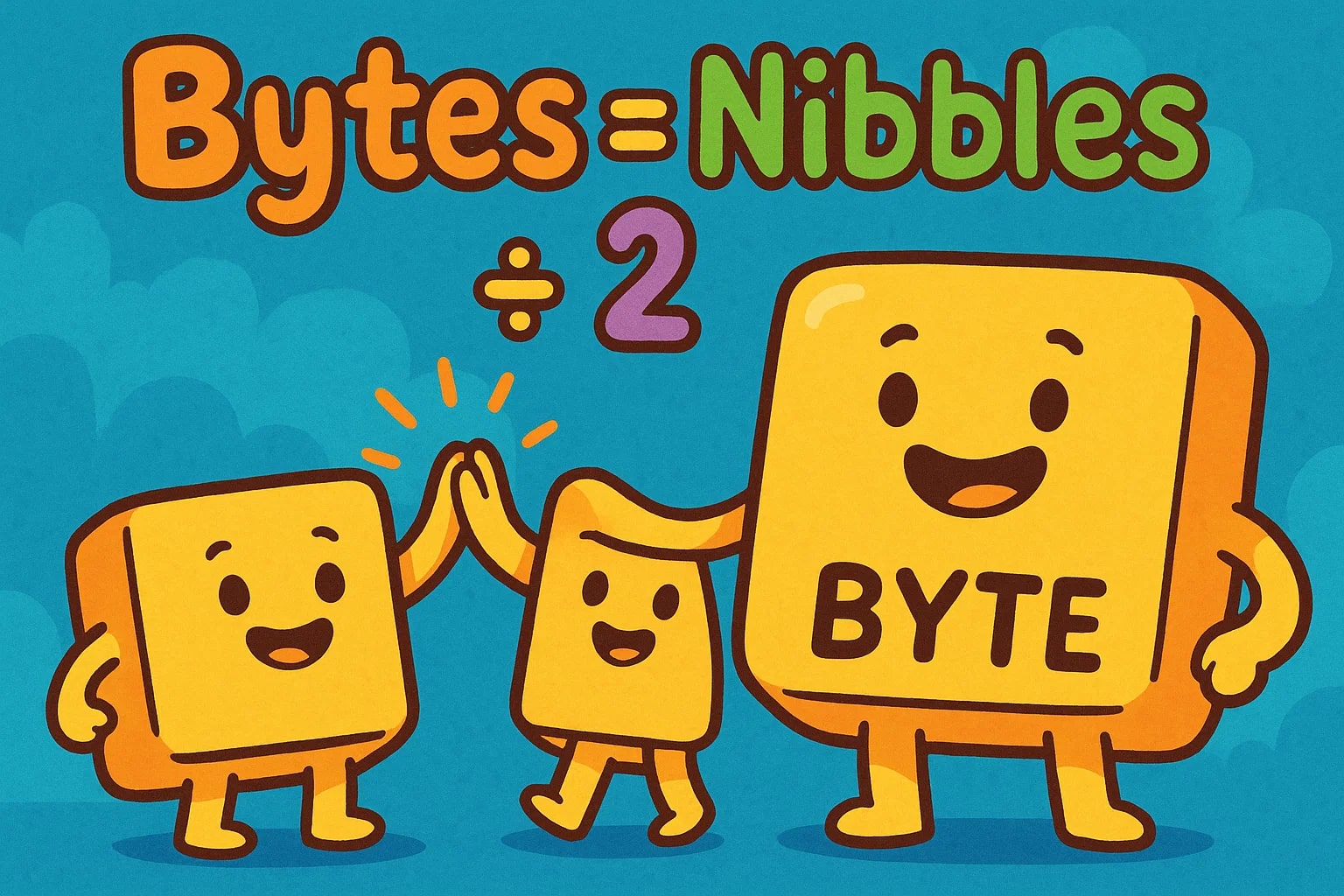nibble to byte – How to convert nib to B
If you’ve ever looked at binary data, you’ve already worked with nibbles and bytes, whether you noticed or not. They’re both small but essential pieces of how digital information is organized. While a nibble is a quick slice of data, a byte is the standard block that just about everything in computing is built on.
Let’s walk through what each one represents and how to convert from one to the other with a simple formula and an example.

What is a nibble?
A nibble is equal to 4 bits — half of a byte. It’s commonly used in environments where binary or hexadecimal values are handled in compact, readable chunks. In hexadecimal notation, for example, each digit represents exactly one nibble.
This unit shows up in:
-
Low-level programming
-
Microcontroller registers
-
Network protocols
-
Instruction sets
-
Data compression formats
Though you won’t see “nibble” printed on your RAM stick, it plays a behind-the-scenes role in how processors and memory are structured.
What is a byte?
A byte (symbol: B) is made up of 8 bits, or exactly 2 nibbles. It’s the most widely used data unit in computing — memory, file sizes, storage, and even character encoding (like ASCII) are all measured in bytes.
Whether you’re saving a text file or streaming a movie, the underlying systems are measuring, transferring, and allocating bytes. While it’s still built from bits and nibbles, the byte is the practical unit most systems operate on by default.
How to convert nibble to byte
Since:
1 byte = 8 bits
1 nibble = 4 bits
You can say:
1 byte = 2 nibbles
So the conversion formula is:
bytes = nibbles ÷ 2
✅ Example: Convert 14 nibbles to bytes
bytes = 14 ÷ 2
bytes = 7
So, 14 nibbles is equal to 7 bytes.
Use the Data Storage Converter to handle quick conversions like this anytime. You can also explore more digital unit tools with the full Conversion tools list.
Did you know?
-
The word "nibble" is a pun on "byte" — because it’s half the size.
-
In hexadecimal notation, one digit equals one nibble. Two hex digits (like 3F) represent a full byte.
-
Older 4-bit CPUs worked with data one nibble at a time. Think vintage calculators and early embedded systems.
-
ASCII characters are stored in single bytes — which means each one is made of 2 nibbles behind the scenes.
-
Some compression algorithms and encryption schemes manipulate data at the nibble level for speed and memory efficiency.
Half a byte that still gets work done
Back in the days of 4-bit microprocessors, a nibble was the full width of the data bus. Every number, every instruction, every memory address — all came in through nibble-sized lanes. One famous example is the Intel 4004, the first commercially available microprocessor, which processed 4 bits at a time. It didn’t need bytes — it got the job done with nibbles.
As technology advanced, word sizes grew to 8, 16, 32, and 64 bits, but the nibble stuck around. Even today, when you're analyzing hex dumps in low-level programming or debugging tools, each character you see represents a nibble of information.
And in modern data compression and network encoding, manipulating individual nibbles can still offer speed and space advantages in specialized systems.

From nibble to byte, it’s a 2-for-1 deal
It doesn’t get much simpler: bytes = nibbles ÷ 2
This conversion is quick, but its roots go deep into the history and architecture of digital systems. Whether you're managing low-level code or just learning the language of computers, it’s a clean relationship that still shows up across modern tech.
Convert more data units using our Data Storage Converter or check out Jetcalculator’s full range of Conversion tools to handle every calculation with confidence.

